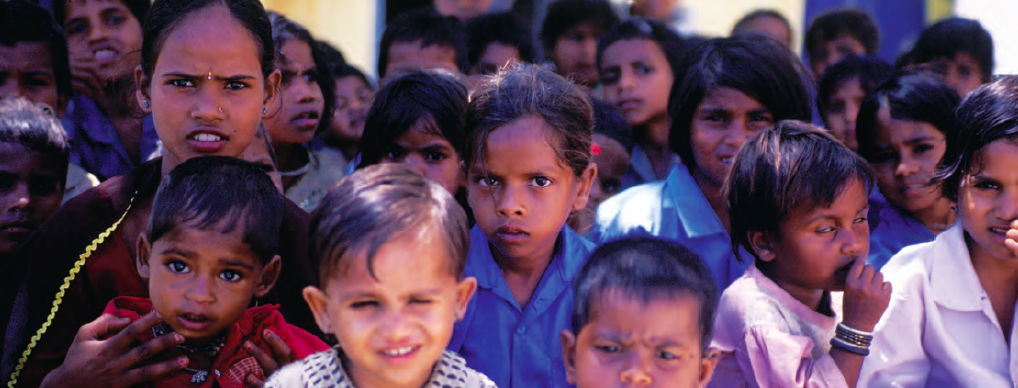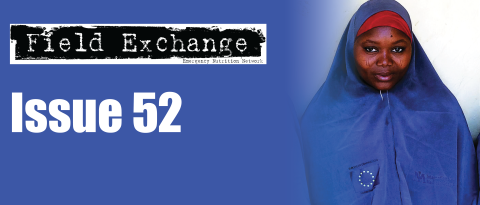Severe acute malnutrition management in India’s children: the riddle
 By Anne-Dominique Israel de Monval and Yara Sfeir
By Anne-Dominique Israel de Monval and Yara Sfeir
Anne-Dominique Israel is a senior nutrition and health advisor with ACF France. She holds a nursing degree and a Master’s in Public health. She has more than 13 years’ experience with ACF in the field of health and nutrition in Africa and Asia. She is actively involved in the Global Nutrition Cluster and the CMAM forum. Her programmatic interest extends to developing a health system strengthening approach with the objective of integrating nutrition into health.
Yara Sfeir has been Regional Nutrition and Health advisor for Asia with ACF France for the past three years, providing technical support to ACF nutrition and health teams in Bangladesh, Myanmar, India, Indonesia, Nepal and Ukraine. Having worked in public health nutrition in a variety of contexts, she joined ACF five years ago, working initially on the global SMART initiative with ACF Canada.
Globally, an estimated 52 million children under five years old are acutely malnourished; 70% of them live in Asia, mostly in South-Central Asia (UNICEF, 2012). The India National Family Health Survey (NFHS 3, 2006) states that 20% of children under five in India are wasted, translating into an astounding 25 million acutely malnourished children in India alone – half the global burden. In an attempt to determine whether economic growth is associated with reduction in child undernutrition in India, a review conducted by researchers from Harvard concluded that economic growth did not help in reducing undernutrition (Subramanyam et al, 2011). Despite economic growth and a number of schemes put in place by the Indian government, such as the Integrated Child Development Services (ICDS) scheme, which provides food and primary healthcare to all children under six years old, little or no improvement has been seen in the numbers of wasted children in India in recent national surveys.
In India, the inpatient model for treatment of severe acute malnutrition (SAM) is still the only model approved at the national level. To date, just a few states have opened up to the community-based management of acute malnutrition (CMAM), such as Rajasthan and Odisha. Inpatient facilities to treat SAM children in India are often called Nutrition Rehabilitation Centres (NRCs) or Malnutrition Treatment Centres (MTCs). Recently, data from a number of different studies shows that this model of treatment has not been performing adequately. This is reflected in Table 1, a compilation of information from five different studies in India. It shows that the recovery rates of SAM children attending the inpatient facilities are still low and the defaulter rate is high when compared to the acceptable minimum standard. The recovery rate varies widely in India from state to state and can be as low as 37%. In all the studies, the recovery rate was well below the 75% standard set by SPHERE. This confirms the well-recognised urgent need to revise and update the model of SAM management in India.
Table 1: Compilation of data from five studies on the efficacy of the inpatient based management of acute malnutrition
| Indicator | Nutrition Rehabilitation Centre (NRC) efficacy | SPHERE standard | Interpretation |
|---|---|---|---|
| Recovery rate | 37.1% to 65% | >75% | POOR |
| Mortality rate | 0% to 2% | <10% minimum, <5% good | GOOD |
| Defaulter rate | 18.4% to 57% | <15% | POOR |
Sources: Kapil & Sareen, 2014; Singh et al, 2014; Taneja et al , 2014; Dasgupta et al, 2014: Garg et al, 2013)
One of the likely reasons for the poor programme performance is the well-documented challenge for mothers to attend facility-based treatment. Internationally accepted WHO home treatment protocols that rely on the use of Ready to Use Therapeutic Food (RUTF) are very challenging to implement in India, as RUTF availability and use is limited to one or two states. There are a number of reasons for this: RUTF is expensive to produce, expensive to buy and requires advanced food technology skills and resources for production. None of these problems is, however, insurmountable. In addition, there has been longstanding opposition from activists in India to the use of RUTF due to a fear of a ‘commercialisation of undernutrition’. Articles have been written advocating for home-based food production as an answer to the problem of undernutrition in India. The other solution put forward by some has been to double the ration for SAM children in the government food scheme; while well intentioned, such an approach has not been tested and may be dangerous for SAM children. The activists are well intentioned and fear corruption; however there is a clear need for a very special diet in the treatment of India’s SAM children. There is also a demand for context-specific evidence and various trials are underway in India; experiences emerging from one in the tribal area of Melghat, central India, feature in this edition of Field Exchange.
Alternatives have been – and continue to be – investigated. One study looking at whether home-based food would be a possible alternative to manufactured RUTF concluded that “home-based management using home-prepared food and hospital-based follow-up is associated with sub-optimal and slower recovery” (Gupta et al, 2010). One of the challenges is finding a home based diet that can replicate RUTF. Furthermore, there is the risk of food contamination and over dilution. In addition, mixing the ingredients two or three times a day requires additional resources and preparation time for the caregiver. Other solutions are being explored, such as small-scale local RUTF production units. However, the magnitude of the problem in India requires a solution that can also be implemented at scale. Production of therapeutic food through local women self-help groups is being investigated but experiences show variable safety of the product’s microbial content. On balance, the best approach could be to advocate for local large-scale production of RUTF (government or private sector-owned). This would address concerns over microbial safety, incorrect dilution and opportunity cost for home producers. RUTF is ready packed and is easier to transport. Furthermore, it could be picked up weekly at health centres and lead to an increase in the geographical coverage of SAM children treated.
So what now? The government of India is currently working to improve the protocol for the management of SAM. National guidelines on CMAM are drafted and currently being reviewed, for release soon. Today, a number of states are starting to allow the controlled use of RUTF. In the years to come, more SAM children will be treated at home in India through take-away RUTF and medicine, as practised in many countries already. India’s biggest challenge now is to resource and manage this transition at scale within its health system. Since India has a long way to go down this road, it will be interesting and informative to watch as this story unfolds.
For more information, contact: Yara Sfeir.
References
Dasgupta R, Ahuja S, Yumnam V. Can nutrition rehabilitation centers address severe malnutrition in India? Indian Pediatr. 2014 Feb;51(2):95-9.
Garg A, Badgaiyan N, Singh K. Integrated program achieves good survival but moderate recovery rates among children with severe acute malnutrition in India. Am J Clin Nutr. 2013 Nov;98(5):1335-42. doi: 10.3945/ajcn.112.054080.
Gupta P, Shah D & Sethi K. Home-based rehabilitation of severely malnourished children in resource poor setting. Indian Pediatr. 2010 Aug;47(8):694-701.
Kapil U & Sareen N. Management of children with severe acute malnutrition. Indian Pediatr. 2014 Jul;51(7):587-8.
NFHS 3, 2006. Ministry of Health and Family Welfare, Government of India. National Family Health Survey (NFHS-3), 2005-2006. Mumbai, India: International Institute of Population Sciences.
Singh K, Badgaiyan N, Ranjan A, Dixit HO, Kaushik A, Kushwaha KP, Aguayo VM. Management of children with severe acute malnutrition: experience of Nutrition Rehabilitation Centers in Uttar Pradesh, India. Indian Pediatr. 2014 Jan;51(1):21-5.
Subramanyam MA, Kawachi I, Berkman LF & Subramanian SV. Is Economic Growth Associated with Reduction in Child Undernutrition in India?, PloS Medicine. March 2011, vol 8, issue 3.
Taneja G, Dixit S, Khatri A, Yesikar V, Raghunath D & Chourasiya S. A study to evaluate the effect of nutritional intervention measures on admitted children in selected nutrition rehabilitation centers of Indore and Ujjain divisions of the State of Madhya Pradesh (India). Indian J Community Med. 2012 Apr;37(2):107-15. doi: 10.4103/0970-0218.96096.
UNICEF 2012. UNICEF-WHO-World Bank Joint Child Malnutrition Estimates. (UNICEF, New York; WHO, Geneva; The World Bank, Washington, DC; 2012.


